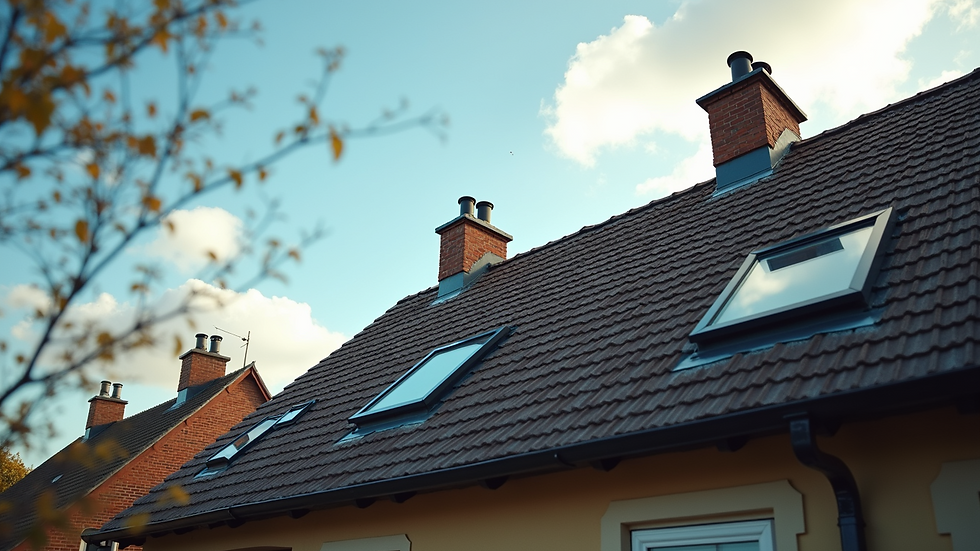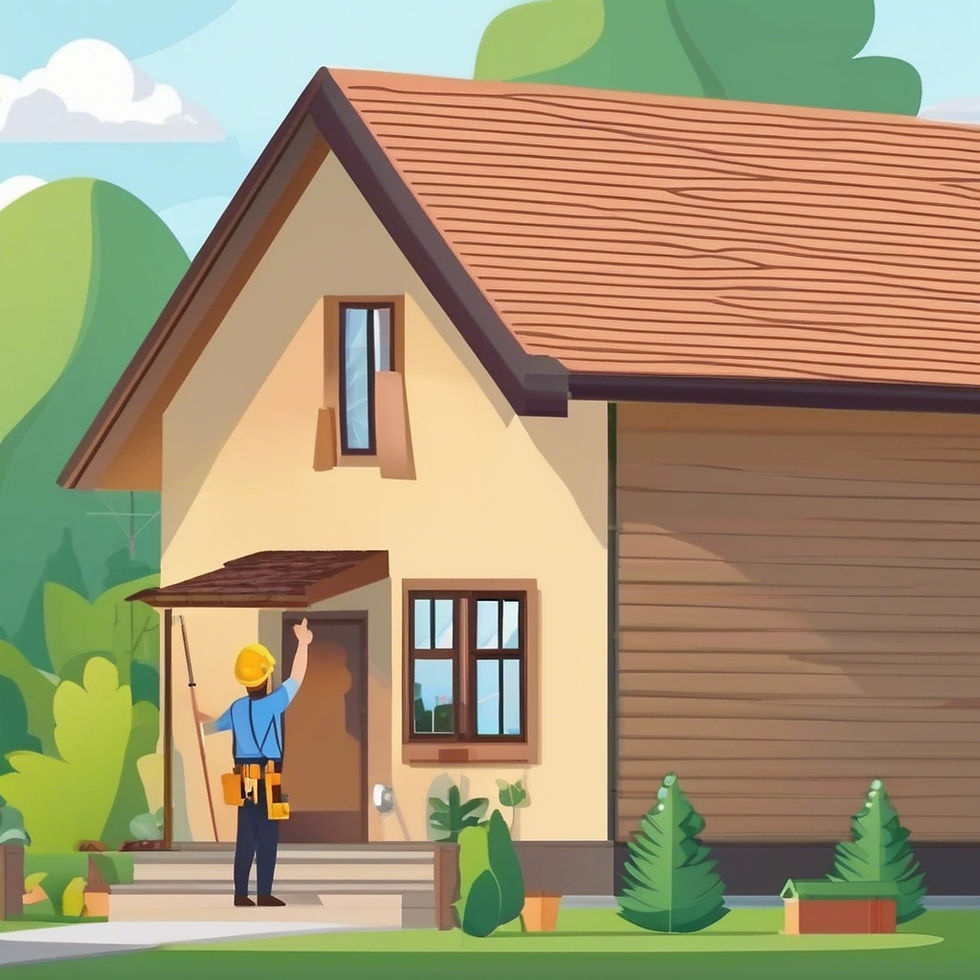Understanding the Influence of Roof Features on Your Replacement Process
- David Mitchell
- 1 day ago
- 4 min read
When homeowners think about replacing their roofs, they often hone in on materials and costs. Yet, the unique features of your roof can greatly influence the entire replacement journey. Recognising these elements early on can empower you to make smart choices, ensuring your new roof suits your visual tastes and functions effectively for years.
The Importance of Roof Features
Roof features include a wide range of elements—such as pitch, shape, materials, and extras like chimneys, skylights, and ventilation systems. These factors play a critical role in determining how complex and costly your roof replacement will be.
For instance, a roof with a steep pitch might require scaffolding and harnesses, increasing both labor and safety costs. Conversely, a flat roof may need specialised membrane materials. Identifying these details at the start can ultimately save you time and money.
Roof Pitch and Shape
The pitch and shape of your roof significantly affect your replacement process. Roof pitch is measured as the vertical rise per 12 inches of horizontal run, a standard way to gauge slope.
Steep vs. Low-Pitched Roofs
Steep roofs, those with a pitch over 6:12, often present challenges during replacement, leading to increased safety measures and labor costs. A study reveals that steep roof installations can be up to 20% more expensive than low-pitched replacements. In contrast, low-pitched roofs can be easier to manage, yet they might encounter issues related to drainage, potentially affecting the long-term performance of your roof.
Roof Shapes
The physical shape of your roof—gabled, hipped, flat, or shed—also impacts the replacement. Gable roofs, with their simple triangular shape, are typically easier to replace. Statistically, 65% of homeowners prefer this style due to its cost-effectiveness. More complex shapes like mansard roofs demand intricate work which can increase both time and costs, sometimes by as much as 30%.
Material Selection
Choosing roofing materials will greatly affect the longevity and price of your new roof. Popular options include asphalt shingles, metal, tile, and slate, each with distinct characteristics.
Asphalt Shingles
Asphalt shingles are favored for their lower price, averaging $90 to $100 per square. They are easy to install, but may not hold up well under extreme weather, especially on steep roofs which experience wind uplift. For roofs with a pitch over 6:12, opt for high-quality architectural shingles that can withstand harsher conditions.
Metal Roofing
Metal roofs offer significant durability, with a lifespan of 40-70 years compared to asphalt shingles, which last around 15-30 years. Though initially more expensive, ranging from $300 to $600 per square, their longevity can make them a cost-effective choice over time. However, installation complexity increases with unique features like dormers or skylights.
Additional Roof Features
Other features of your roof can also complicate the replacement process.
Chimneys and Ventilation
Chimneys may need additional work during replacement, leading to cost increases. If your roof has a chimney, removing and reinstalling it can add $500 to $2,000 depending on the construction style. Proper ventilation is vital too, with up to 80% of roofing issues related to poor airflow. Hence, modifications to your roofing should always factor in ventilation systems.
Skylights and Solar Panels
Skylights or solar panels on your roof also require thoughtful integration into the new design. These features add complexity but also provide benefits. Approximately 20% of homeowners will choose to upgrade to energy-efficient skylights that can save up to 15% on heating costs when properly sealed during installation.
Working with a Roofing Contractor
Choosing the right roofing contractor can be just as important as selecting roofing features. The contractor should be equipped to handle the unique aspects of your roof effectively.
Questions to Ask
When interviewing contractors, consider these important questions:
What experience do you have with roofs similar to mine?
How do you plan for unexpected issues that might arise during replacement?
Can you provide references from previous clients?
Asking these questions can help ensure that the contractor is experienced and capable of handling your specific roof requirements.
Budgeting for Your Roof Replacement
Understanding how roof features affect your replacement costs is vital when budgeting. Your roof's complexity often dictates its overall replacement expense.
Hidden Costs
Be cautious of potential hidden costs in your project. For example, if extensive damage is discovered after the old roof is removed, you might face unplanned expenses that could escalate your budget by 10%-20%.
Planning Ahead
Setting aside a contingency budget of roughly 10-20% of your total cost can help manage unforeseen issues and provide financial security throughout the project.
Final Thoughts
The features of your roof greatly influence the replacement process. From pitch and shape to materials and added components like chimneys and skylights, every aspect can affect complexity, costs, and the overall success of the project.
By grasping these details and collaborating with a knowledgeable contractor, you can ensure a smoother replacement experience that meets your needs for years. Investing this time now will lead to a roof that not only elevates your home’s visual appeal but also provides reliable protection.

Taking the time to understand how roof characteristics will impact your replacement can lead to informed decisions that ultimately benefit your home and its long-term value.



Comentarios